
Industrials automation company Rockwell (NYSE:ROK) reported revenue ahead of Wall Street’s expectations in Q2 CY2025, with sales up 4.6% year on year to $2.14 billion. The company’s full-year revenue guidance of $8.2 billion at the midpoint came in 0.8% above analysts’ estimates. Its non-GAAP profit of $2.82 per share was 5.7% above analysts’ consensus estimates.
Is now the time to buy Rockwell Automation? Find out by accessing our full research report, it’s free.
Rockwell Automation (ROK) Q2 CY2025 Highlights:
- Revenue: $2.14 billion vs analyst estimates of $2.07 billion (4.6% year-on-year growth, 3.8% beat)
- Adjusted EPS: $2.82 vs analyst estimates of $2.67 (5.7% beat)
- Adjusted EBITDA: $419 million vs analyst estimates of $457.4 million (19.5% margin, 8.4% miss)
- Management raised its full-year Adjusted EPS guidance to $10 at the midpoint, a 3.1% increase
- Operating Margin: 21.2%, up from 14.3% in the same quarter last year
- Free Cash Flow Margin: 28.6%, up from 11.6% in the same quarter last year
- Organic Revenue rose 4% year on year (-8.4% in the same quarter last year)
- Market Capitalization: $39 billion
"Q3 marked another quarter of strong execution and significant progress toward our long-term margin expansion goals. We returned to year-over-year sales growth with a broad set of customer wins in the quarter, including significant brownfield and greenfield opportunities. Rockwell is also investing over $2 billion in our plants, talent, and digital infrastructure over the next five years. The majority of this spend is focused on capital investment in the United States," said Blake Moret, Chairman and CEO.
Company Overview
One of the first companies to address industrial automation, Rockwell Automation (NYSE:ROK) sells products that help customers extract more efficiency from their machinery.
Revenue Growth
Reviewing a company’s long-term sales performance reveals insights into its quality. Any business can put up a good quarter or two, but the best consistently grow over the long haul. Unfortunately, Rockwell Automation’s 4.4% annualized revenue growth over the last five years was sluggish. This fell short of our benchmark for the industrials sector and is a tough starting point for our analysis.
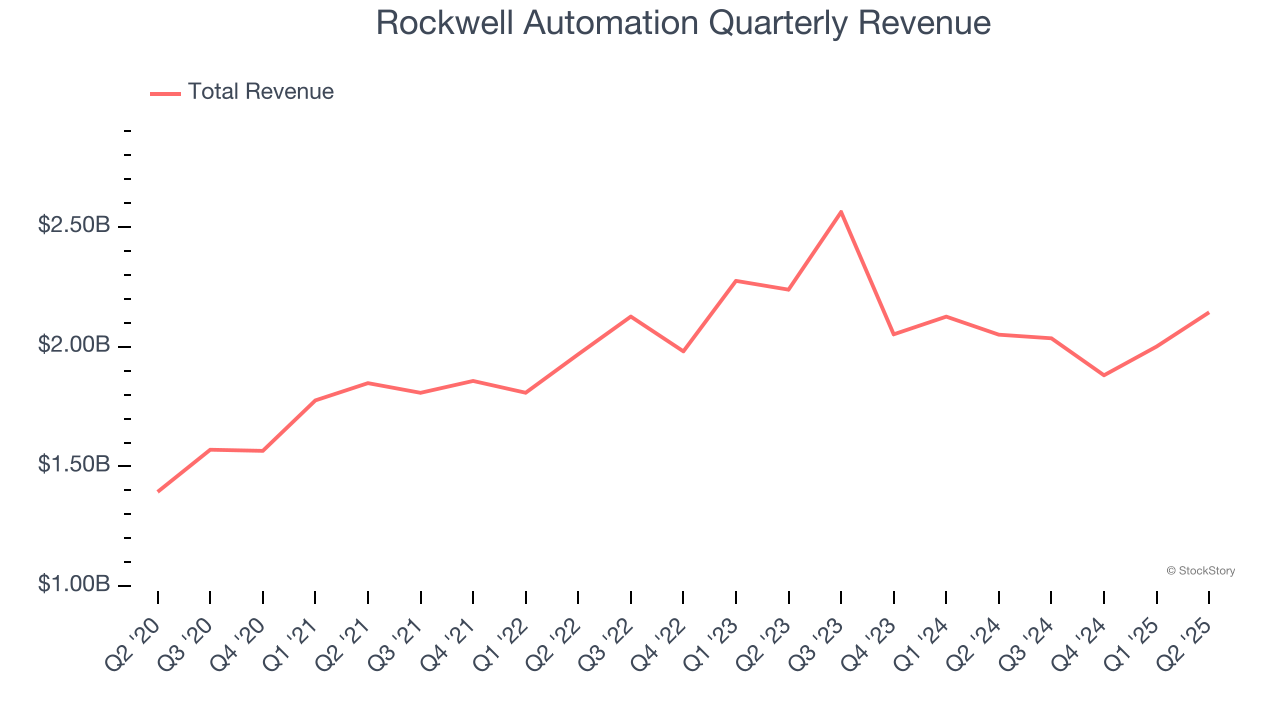
Long-term growth is the most important, but within industrials, a half-decade historical view may miss new industry trends or demand cycles. Rockwell Automation’s performance shows it grew in the past but relinquished its gains over the last two years, as its revenue fell by 3.3% annually. Rockwell Automation isn’t alone in its struggles as the Internet of Things industry experienced a cyclical downturn, with many similar businesses observing lower sales at this time. 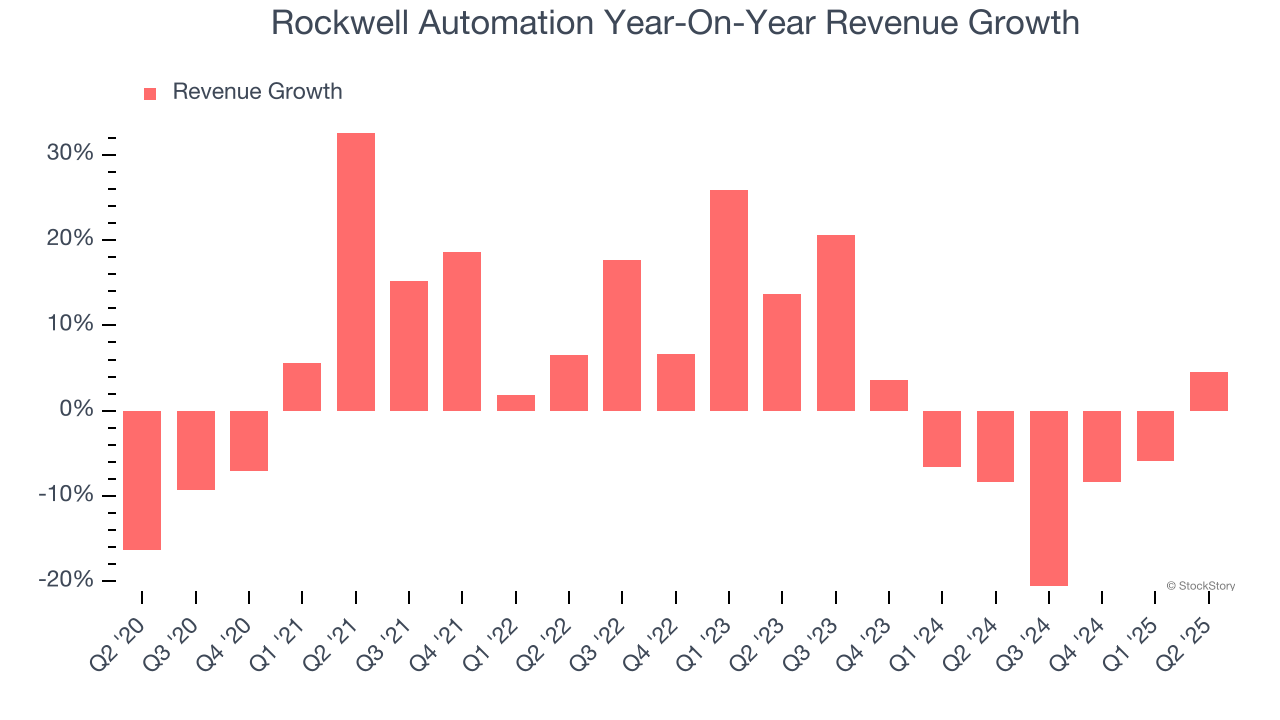
Rockwell Automation also reports organic revenue, which strips out one-time events like acquisitions and currency fluctuations that don’t accurately reflect its fundamentals. Over the last two years, Rockwell Automation’s organic revenue averaged 3.3% year-on-year declines. Because this number aligns with its two-year revenue growth, we can see the company’s core operations (not acquisitions and divestitures) drove most of its results. 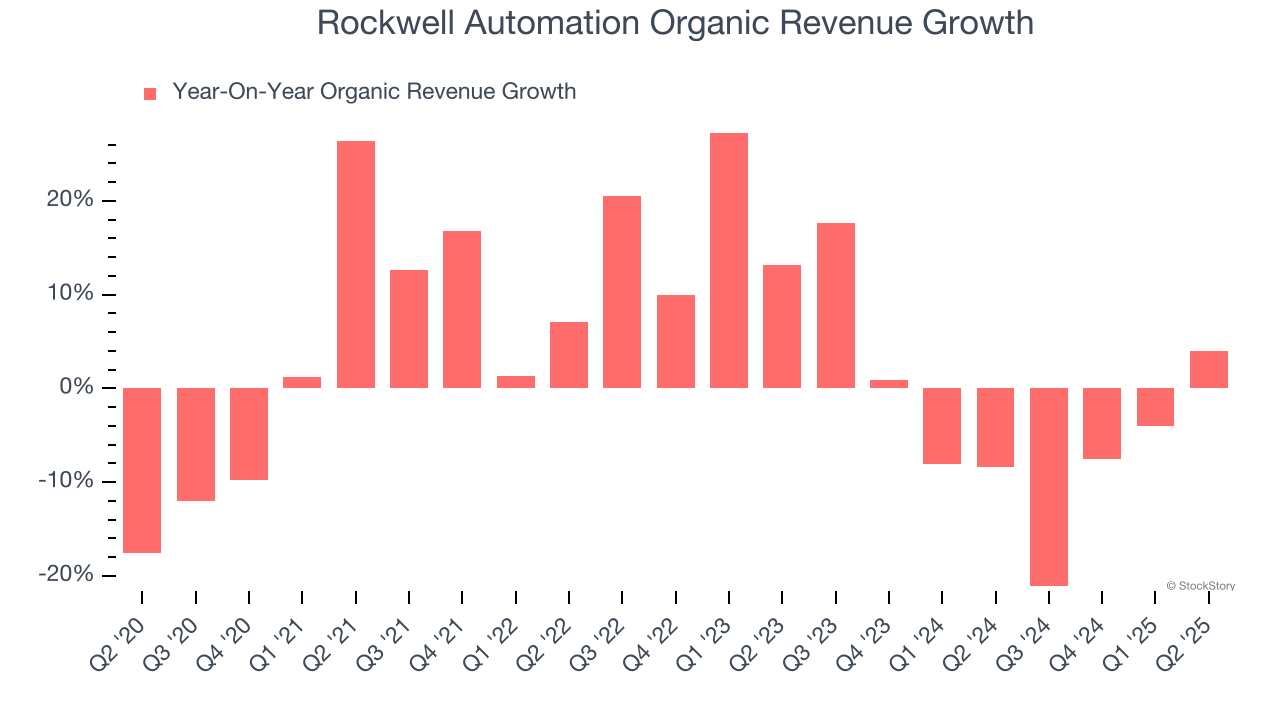
This quarter, Rockwell Automation reported modest year-on-year revenue growth of 4.6% but beat Wall Street’s estimates by 3.8%.
Looking ahead, sell-side analysts expect revenue to grow 6.1% over the next 12 months. While this projection suggests its newer products and services will fuel better top-line performance, it is still below the sector average.
Today’s young investors won’t have read the timeless lessons in Gorilla Game: Picking Winners In High Technology because it was written more than 20 years ago when Microsoft and Apple were first establishing their supremacy. But if we apply the same principles, then enterprise software stocks leveraging their own generative AI capabilities may well be the Gorillas of the future. So, in that spirit, we are excited to present our Special Free Report on a profitable, fast-growing enterprise software stock that is already riding the automation wave and looking to catch the generative AI next.
Operating Margin
Rockwell Automation has been a well-oiled machine over the last five years. It demonstrated elite profitability for an industrials business, boasting an average operating margin of 17%. This result isn’t surprising as its high gross margin gives it a favorable starting point.
Analyzing the trend in its profitability, Rockwell Automation’s operating margin decreased by 1.8 percentage points over the last five years. This raises questions about the company’s expense base because its revenue growth should have given it leverage on its fixed costs, resulting in better economies of scale and profitability.
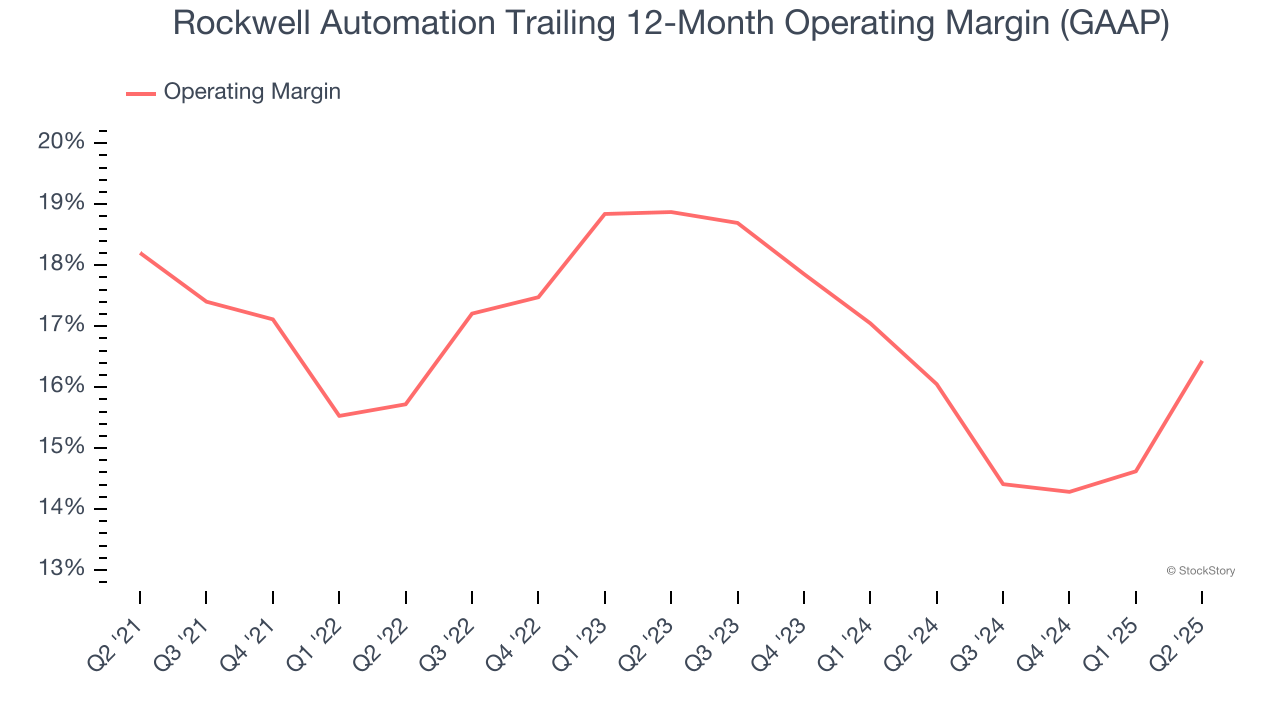
In Q2, Rockwell Automation generated an operating margin profit margin of 21.2%, up 6.8 percentage points year on year. The increase was driven by stronger leverage on its cost of sales (not higher efficiency with its operating expenses), as indicated by its larger rise in gross margin.
Earnings Per Share
Revenue trends explain a company’s historical growth, but the long-term change in earnings per share (EPS) points to the profitability of that growth – for example, a company could inflate its sales through excessive spending on advertising and promotions.
Rockwell Automation’s unimpressive 4.1% annual EPS growth over the last five years aligns with its revenue performance. On the bright side, this tells us its incremental sales were profitable.
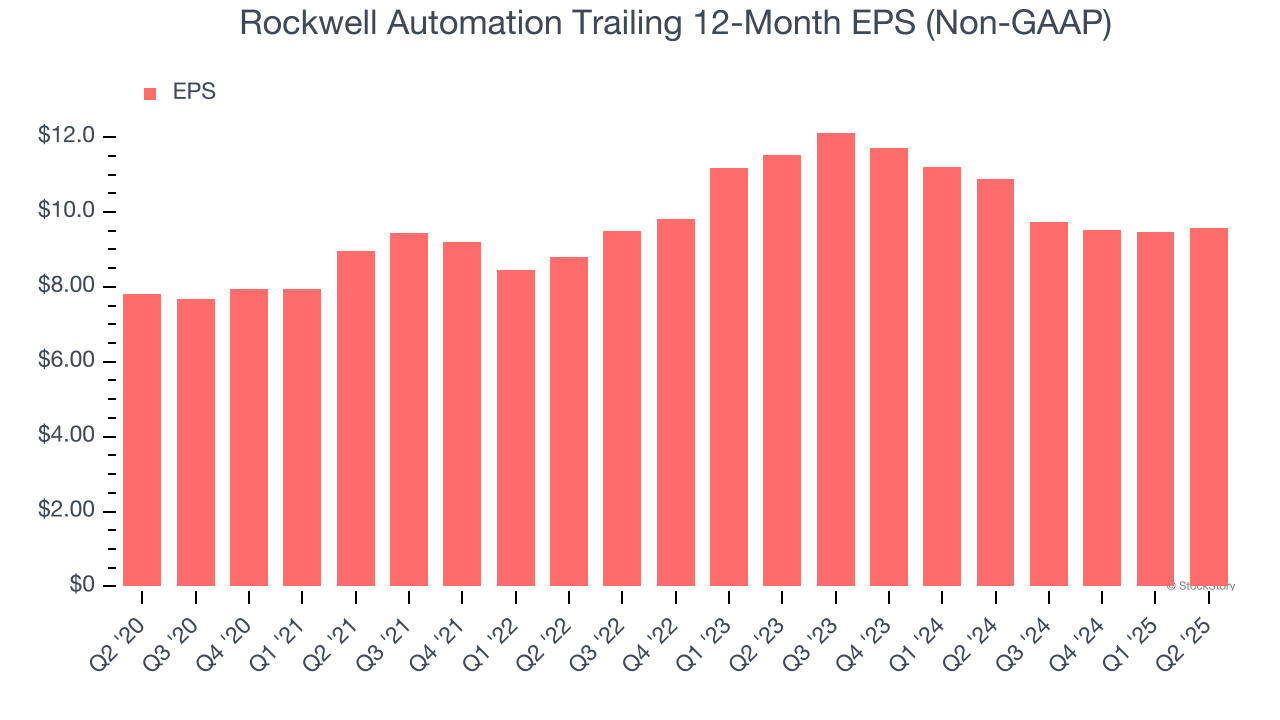
Like with revenue, we analyze EPS over a more recent period because it can provide insight into an emerging theme or development for the business.
For Rockwell Automation, its two-year annual EPS declines of 8.9% show it’s continued to underperform. These results were bad no matter how you slice the data.
In Q2, Rockwell Automation reported adjusted EPS at $2.82, up from $2.71 in the same quarter last year. This print beat analysts’ estimates by 5.7%. Over the next 12 months, Wall Street expects Rockwell Automation’s full-year EPS of $9.57 to grow 17.2%.
Key Takeaways from Rockwell Automation’s Q2 Results
We were impressed by how significantly Rockwell Automation blew past analysts’ organic revenue expectations this quarter. We were also excited it lifted its full-year guidance. On the other hand, its EBITDA missed. Overall, we think this was a solid quarter with some key areas of upside. The stock traded up 1.7% to $351.97 immediately after reporting.
Rockwell Automation put up rock-solid earnings, but one quarter doesn’t necessarily make the stock a buy. Let’s see if this is a good investment. We think that the latest quarter is only one piece of the longer-term business quality puzzle. Quality, when combined with valuation, can help determine if the stock is a buy. We cover that in our actionable full research report which you can read here, it’s free.
